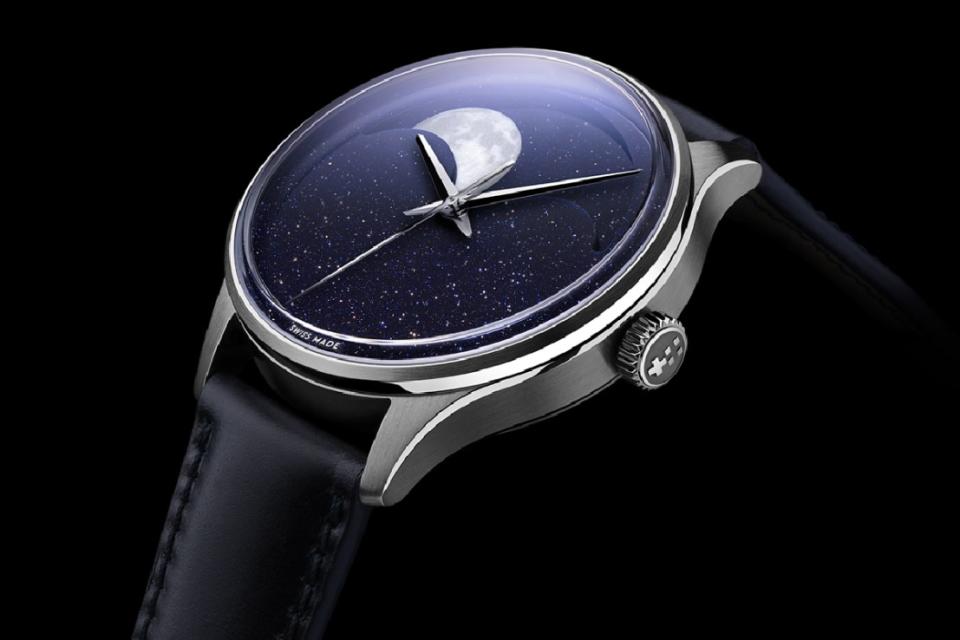Lunar ticks: How the moonphase rose once again

For more like this story about the moonphase from City A.M. – The Magazine, tap here
Get out your telescopes, and study your star charts because celestial complications are having a comeback. And we’re not just talking demure windows sequestered at six o’clock – these new moonphases and starscapes are taking centre stage.
Moonphases are nothing new: the origins of a function that tracks the passage of the lunar body from waxing gibbous to waning crescent, over the 29.5 days that make a lunar month, first arrived in 205 BC. It was part of an analogue computer that was found, in 1901, off the coast of the Greek island of Antikythera, after which it is named. The machine had 37 gears, allowing it to track the sun and moon as they moved through the heavens.
It could also inform you when the next Olympics Games were, should you need to know. How this function went from 2nd century computer to wristwatch is harder to chart. There were astronomical clocks, found in cathedrals, made thousands of years after the Antikythera. However, they had the earth at the centre of the known universe, with the sun in orbit. You can imagine what happened to those in a post-Copernicus era…
Moonphases cropped up in 16th century German longcase clocks, but it was the English, in the 17th century, who adopted the “moonphase at six o’clock” approach. Unsurprisingly, given its reputation for firsts, it was Patek Philippe who, in 1925, originally put this function on a wristwatch as part of its perpetual calendar furniture, joining the day, date, month and leap year indications.
Now these complications are coming to the fore. Last year, Christopher Ward unveiled its C1 Moonphase, which it dubbed “the most beautiful watch ever”. To be fair it wasn’t wrong: the dial is a glittering expanse of logo-less aventurine, while the top half of the dial is dominated by a glowing orb made luminous thanks to Globolight – a mix of SuperLuminova and ceramic that glows white, rather than the more common green.
This year Watches and Wonders was a constellation of celestial complications. Independent brand Trilobe created a customisable version of its Les Matineux, the L’Heure Exquise Secret. It maintains the three concentric dials on which the time is told, but on to that a celestial-scape can be mapped that commemorates how the sky looked on a particular day at a specific time and location. The stars shine when put under UV light, bringing that moment to life. Raymond Weil kept things a little more traditional with a grinning moon on its GPHG-winning Millesime, while Laurent Ferrier represented its lunar cycle as a double moon set against a backdrop of aventurine glass so you could see the phases in both hemispheres.
It’s not hard to see why these functions are popular. It’s the same thing that has driven a rise in the popularity of tarot: now more than ever, we need a little sprinkle of magic on the everyday. A reminder that, although we may be earthbound, we are all made of stardust.

 Yahoo Finance
Yahoo Finance 